Year of Indigenous Languages: Maori and Polish
August 9, 2019The United Nations has declared 2019 as the International Year of Indigenous Languages. To celebrate, for each month this year, you’re invited to view greetings for different languages.
For August, we feature the languages Maori and Polish:
Maori
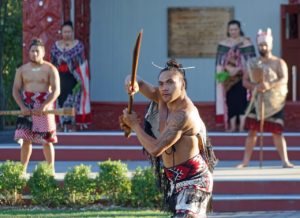
Nau mai e nga mana reo o te ao.
Na matau nga iwi taketake o Aotearoa
Greetings to all the Indigenous Languages of the World.
From the people of Aotearoa New Zealand.
Polish
Na dzien dzisiejszy i jego bfogos-t’awienstwa zawdzi czam swiatu postawie wdzi cznosci
For today and its blessings, I owe the world an attitude of gratitude.
To find out more on the International Year of Indigenous Languages, visit their website below:
International Year of Indigenous Languages
Photo Maori Painted Warrior by Bernd Hildebrandt obtained from Pixabay. Used with permission.
St Joseph’s Perthville: School, College, House
St Joseph’s Perthville: School, College, House.
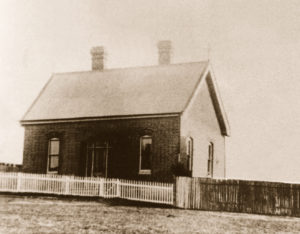
This book by Dr Marie Crowley is the long-awaited history of education carried out by the Sisters of Saint Joseph at Perthville. The book begins with an examination of the beginnings of the first small school established in 1872. It then traces the development of St Joseph’s College – a highly respected boarding College for girls who, for the most part, lived in rural New South Wales. The concluding chapters recount the final years of St Joseph’s when it served as St Joseph’s House – the boarding facility for MacKillop College, Bathurst. That facility finally closed its doors at the conclusion of 2017.
This book complements the three published works by Dr Crowley dealing with the history of the Sisters of Saint Joseph at Perthville: Women of The Vale, Except In Obedience and A Priceless Treasure. From the opening paragraph she brings to the history her skill and scholarship, providing a clear background to the many developments and changes that occurred at St Joseph’s over a period of 145 years. The difficulties involved in welding together the three stages of education at Perthville – School, College and House – have been skilfully handled resulting in a coherent, chronological presentation.
Threading together every word and paragraph of this book is the special attention Dr Crowley gives to the Sisters of Saint Joseph. Describing them as the ‘life blood’ of the entire Perthville establishment, she highlights their generosity and fidelity in the face of extreme poverty, their hard work in the School and the boarding College, their expertise in teaching and their spirit of friendship. The spirit in which the Sisters accepted the many changes to the College is sensitively presented throughout the book, as are their efforts to maintain the College and House in the face of overpowering difficulties.
St Joseph’s Perthville: School, College, House will be launched at 11am on Saturday, 21 March 2020 at St Joseph’s Heritage and Conference Centre, Perthville.
Dr Marie Crowley
International Day of the World’s Indigenous Peoples 2019
The United Nations General Assembly adopted a Resolution on ‘Rights of Indigenous Peoples’, proclaiming 2019 as the International Year of Indigenous Languages.
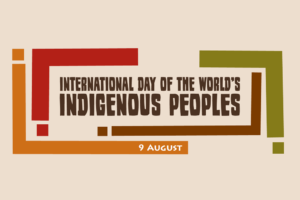 The International Day of the World’s Indigenous Peoples is observed on August 9 each year to promote and protect the rights of the original inhabitants of any given region. There are an estimated 370 million indigenous people in the world, living across 90 countries. They make up less than 5 per cent of the world’s population, but account for 15 per cent of the poorest. They speak an overwhelming majority of the world’s estimated 7,000 languages and represent 5,000 different cultures.
The International Day of the World’s Indigenous Peoples is observed on August 9 each year to promote and protect the rights of the original inhabitants of any given region. There are an estimated 370 million indigenous people in the world, living across 90 countries. They make up less than 5 per cent of the world’s population, but account for 15 per cent of the poorest. They speak an overwhelming majority of the world’s estimated 7,000 languages and represent 5,000 different cultures.
Celebrate this day and give thanks for the wisdom and spirituality of our indigenous peoples all around the globe!
Visit the ‘International Day of the World’s Indigenous Peoples’ Website
Mary MacKillop Today Crowdfunding Campaign
August 8, 2019Help give 200 children in Fiji the tools to learn!
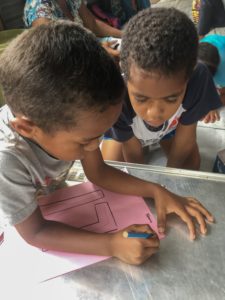 Mary MacKillop Today has partnered with Child Benefit to support the Mobile Kindy program in Fiji.
Mary MacKillop Today has partnered with Child Benefit to support the Mobile Kindy program in Fiji.
Our aim is to provide access to high quality and inclusive early childhood education in the informal settlements around Suva. Mary MacKillop Today is launching a crowdfunding campaign on 8 August with the hope of raising $15,000 which will provide 200 children with the tools to learn.
Just:
- $10 will give one child a hygiene kit,
- $25 will give 30 children nutritional lunches for 1 week and
- only $48 will give one child an educational resource kit.
Join us in honouring Mary MacKillop’s legacy and passion for education by sharing and pledging to our campaign:
Donate to the Mary MacKillop Today Crowdfunding Campaign
For more information visit our Fiji projects and the Facebook page for the Mobile Kindy.
Thank you!

Saint Mary MacKillop Feast Day 2019
Greetings on the feast of Saint Mary MacKillop.
As we celebrate Mary MacKillop’s feast day, let us celebrate how she was a woman who raised the powers of love in her time and continues to inspire us to do the same in our day. Love was at the heart of all that Mary did. She recognised that the source of her love had its origin in God. She knew deeply within her that:
1 John 4:16
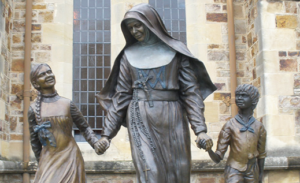
From this spiritual source she drew the energy to be a heartbeat of God’s love in the world especially for those most disadvantaged in our society.
Mary loved all with an undivided heart. As Pope John Paul II said during his 1995 visit to Australia for her beatification:
Hers was a spirituality of the heart, holding in balance a contemplative stance with a concern for justice. Mary entered the mystery of God’s love and allowed herself to be transformed by it in order to assist the voiceless to find their voice. Mary was indeed a woman who remained grounded in the reality of life, and through all her experiences learnt to ‘act justly, love tenderly and to walk humbly with God’ (Micah 6:8). She rolled up her sleeves, got her hands dirty and responded to the cries of those who struggled in life.
An example of how Mary MacKillop raised the power of love occurred when Mary and Sister Helena McCarthy were on their way to the city. Sister Helena shared this story. “We were waiting at the corner of the Street near Mount Street Post Office for a tram. A young woman came staggering along and at last reached and rested by the stone wall on the side of the footpath. I naturally thought the woman was intoxicated, but Mother’s quick eye detected something more serious. She said to me ‘Come along, dear and see what is wrong with this poor woman.’ On getting up to her we found the woman was very ill. Mother asked if she could do anything for her. The woman said if she could get to the chemist’s nearby, she knew what would relieve her. The three of us then went to the chemist’s where the patient was attended to and we waited until she felt better”. [2]
On this feast day let us, like Mary MacKillop, be women and men who raise the powers of love. Recently I was having a cup of coffee with one of our sisters and I asked her what she had been doing. She replied that she had just come from a meeting of ‘Grandmothers Against Detention of Refugee Children’. Their work is based around the safety and protection for innocent children living in the experience of detention centres. On another day, I visited the office of the Sisters of Saint Joseph Congregational Administration Centre to find the staff knitting over lunch. They told me that they were joining others around our country who belong to the organisation ‘Wrap with Love’. Joining in movements such as these is one way of continuing to give expression to Mary MacKillop’s vision for living the Gospel.
On this feast day may you be inspired like Saint Mary MacKillop to make a difference in someone’s life by raising the powers of love through an act of everyday kindness.
May your day be filled with the joy and love that filled the heart of Saint Mary MacKillop.
Sr Monica Cavanagh rsj
Congregational Leader
[1] Pope John Paul II, 20 January 1995 at Beatification ceremony Randwick
[2] Sister Helena McCarthy – Memories of Mary by those who knew her p 71, 2010
A Day in the Life: Josephite Associate
The Vocation of being a Josephite Associate.
From being educated in Josephite schools and spending nearly 40 years as an educator in them I have truly been immersed in Josephiteness! I can’t recall who invited me along to an Associates’ gathering; I just seemed to slide into this movement and have remained deeply involved ever since.
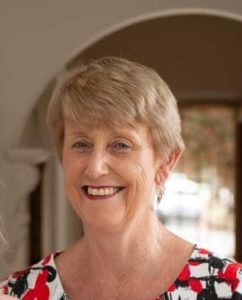 To have a vocation is to have a mission in life, an inclination to follow a particular path. From a young age I felt drawn to teaching. Being a teacher in Catholic schools provided me with opportunities to deepen my own faith as I shared my knowledge and belief with the children I was teaching and through my involvement in school and parish life.
To have a vocation is to have a mission in life, an inclination to follow a particular path. From a young age I felt drawn to teaching. Being a teacher in Catholic schools provided me with opportunities to deepen my own faith as I shared my knowledge and belief with the children I was teaching and through my involvement in school and parish life.
When I became an Associate, this added a further dimension and focus to my faith life. It provided me with the opportunity to meet and share my Catholic faith with others, enabling me to become more aware of Mary MacKillop’s story and learn about her legacy through the sisters who continued this legacy through their lives of commitment and service. Being a Josephite Associate has given me a sense of belonging, of feeling connected to like-minded people who share a spirituality that gives me focus and energy. There is great value in being surrounded and supported by others, both sisters and Associates, who share a common bond, namely that of living the Gospel with a Josephite Heart.
This connectedness has allowed to arise other opportunities that have given meaning and sustenance to my life and faith and have enabled me to feel valued and able to contribute to the wider Josephite story and so, ‘to further the reign of God’ (Associates’ Mission Statement). My involvement made it possible for me to develop my skills in leadership within SA Associates and beyond; it has helped to shape my contribution and leadership in schools in the Josephite tradition so as to ensure that those communities came to know and hopefully be inspired by the example of Mary MacKillop. In later years I have also felt drawn to become further immersed in the Josephite story through becoming a Covenant Josephite.
Now as a part of our International Josephite Associate Leadership Team (IJALT) I am very aware of the privilege and responsibility that I and others who are Associates have in enabling others to know and share in the Josephite charism. I feel strongly that I carry this tradition in my heart and the challenge for me is to make a difference in the lives of others because of it and to assist our Associates to recognize this gift within themselves.
Two years ago I was invited to travel to Peru to meet up with Associates there. At that time, one of the Associates from Lima was the person who took Mary’s story to a distant town and showed me how, from that encounter an Associate group was established. Prior to Maria’s going there, no sisters had been to Cajabamba. It was Maria who carried the story and shared the charism in a new place to enable others to share in it. Happenings such as this provide me with the impetus to keep encouraging Associates to know that we too can make a difference. I truly have been blessed to be ‘caught up in the Josephite net’!
Mary Hemmings
Fr Julian: Man of Words – Letter Seven
August 7, 2019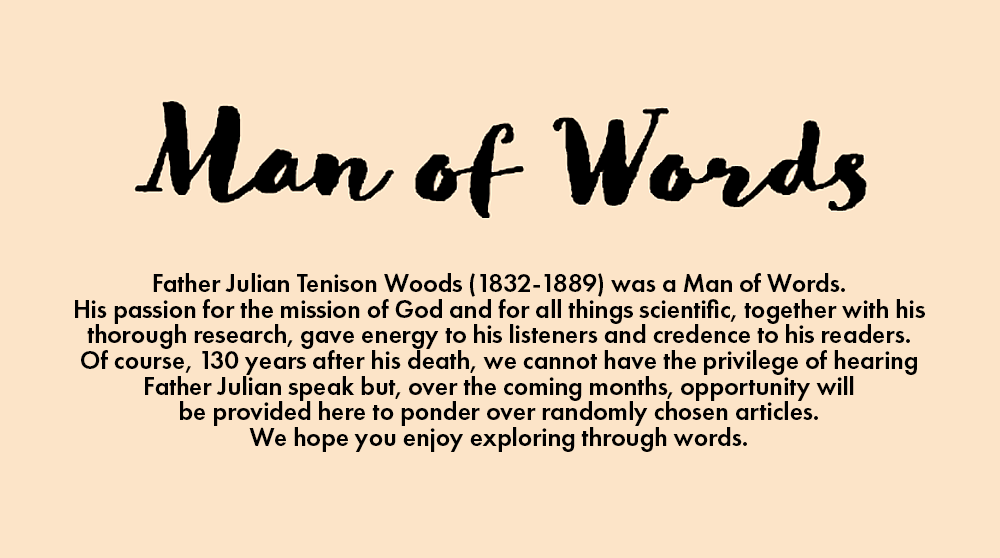
Have you ever been into a large underground cave? This month Father Julian invites us to share his experience of exploring the caves of Mosquito Plains, near Naracoorte, South Australia in 1857.
Excursion to Mary MacKillop Place
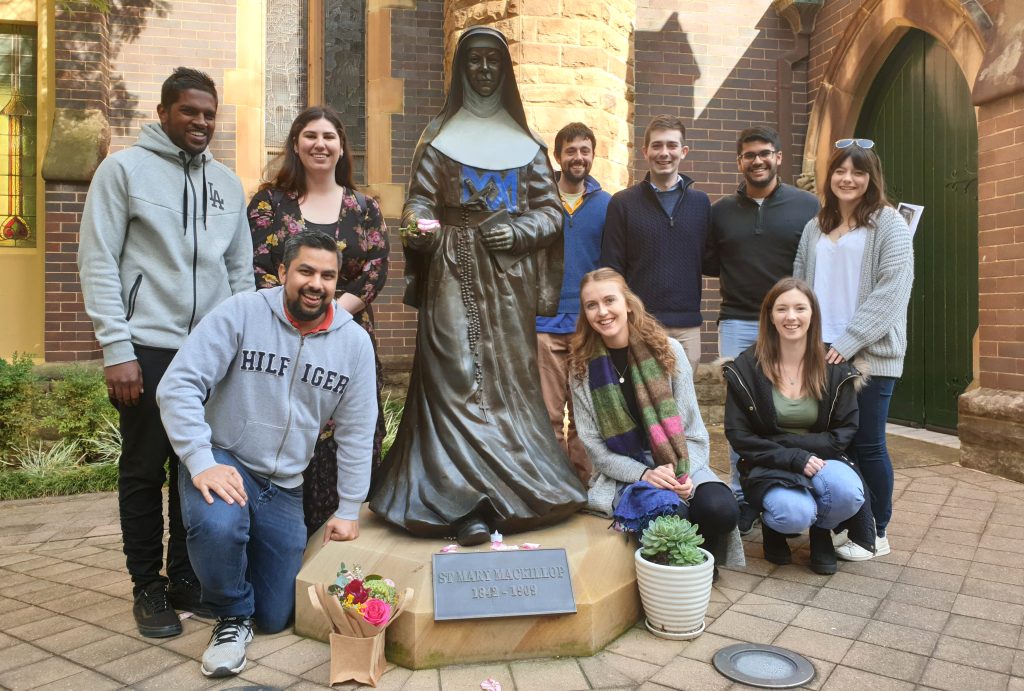
Boundless, a young adults group from the Northern Suburbs of Sydney, recently visited Mary MacKillop Place, North Sydney to learn more about Saint Mary MacKillop.
With Saint Mary MacKillop’s Feast Day approaching on 8 August, I thought it was a great opportunity to organise and invite members of my young adults group ‘Boundless’ to an excursion to Mary MacKillop Place.
